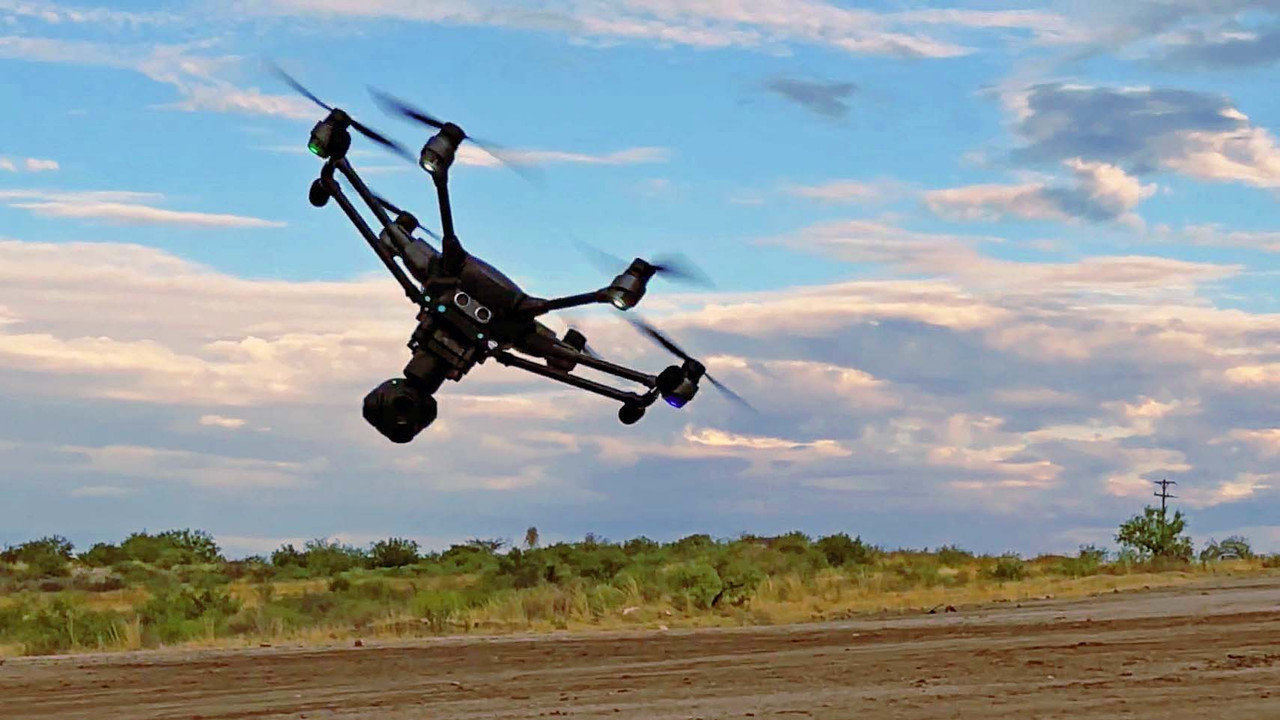Hello everyone,
I'm not sure how to address this topic, since I would love to gather some true insight from this incident rather than starting a speculation brainstorm.
Also I'm really not looking for advice; it is clear that this incident was self-induced, and as long as I don't repeat the same maneuvers the H will be just fine.
So, long story short: I was trying to snap a cool image of my H tilted, (I did get it):

But, in the process I believe I got myself into a Vortex Ring State, resulting in a minor crash with my H.
Trying to get a snapshot of a fully tilted Typhoon H, I began to (very agressively) roll back and forth at maximum rate. (imagine tilting the aircraft as it is shown in the picture above, going side to side while remaining almost in the same position)
After going, back and forth, 6 times in quick succession, the aircraft lost lift completely and it quickly sinked in a wobbly fashion.
Since I was just very close to ground the aircraft made ground contact, but quickly recovered.
I was able to regain altitude with only minor scratches on the camera.
----
So, for those of you with knowledge on aerodynamics, my question is: Did I get myself into Vortex Ring State by tilting the H back and forth so quickly? Or was it something else?
I have everything recorded, but I don't want to upload the video just now without first setting some context around it.
Greetings!
I'm not sure how to address this topic, since I would love to gather some true insight from this incident rather than starting a speculation brainstorm.
Also I'm really not looking for advice; it is clear that this incident was self-induced, and as long as I don't repeat the same maneuvers the H will be just fine.
So, long story short: I was trying to snap a cool image of my H tilted, (I did get it):

But, in the process I believe I got myself into a Vortex Ring State, resulting in a minor crash with my H.
- The scenario was as follows:
Trying to get a snapshot of a fully tilted Typhoon H, I began to (very agressively) roll back and forth at maximum rate. (imagine tilting the aircraft as it is shown in the picture above, going side to side while remaining almost in the same position)
After going, back and forth, 6 times in quick succession, the aircraft lost lift completely and it quickly sinked in a wobbly fashion.
Since I was just very close to ground the aircraft made ground contact, but quickly recovered.
I was able to regain altitude with only minor scratches on the camera.
----
So, for those of you with knowledge on aerodynamics, my question is: Did I get myself into Vortex Ring State by tilting the H back and forth so quickly? Or was it something else?
I have everything recorded, but I don't want to upload the video just now without first setting some context around it.
Greetings!
Last edited:


